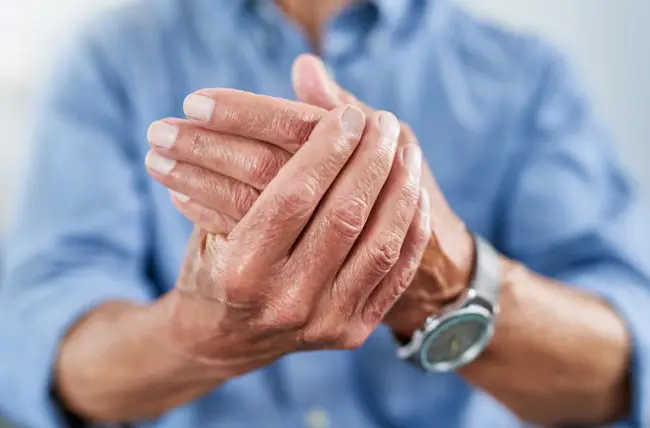Contact Us
We are here for you! Book you Physiotherapy Appointment by choosing one of the following option below
Write to us
Appointment@rcphealth.ca
Choose time slot
that work for you
Arthritis is a very common disease that affects people of almost every age and gender. Most people think of it as different kinds of joint pain or disease. Arthritis is the most common reason why people can’t work in the world today. More than 20 million people around the world have arthritis, which makes it hard for them to be physically active. Arthritis is the inflammation of joints, which is what the word means. Arthritis can be caused by anything that destroys the cartilage.

All types of arthritis have symptoms like pain and a burning feeling. Some other signs are:
Poor sleep due to pain and discomfort caused due to arthritis.
In rare cases, arthritis symptoms may include swelling and inflamed joints, and affect distinct joints and other organs in the body. This can cause fever, fatigue, weight loss, gland swelling, loss of flexibility, less aerobic fitness, and muscle weakness.
Arthritis can have many risk factors and causes. Here are some of the most common:
Age: The risk of arthritis increases with age, as wear and tear on the joints over time can lead to degeneration.
Genetics: Certain types of arthritis, such as rheumatoid arthritis, have a genetic component, meaning that having a family history of the condition can increase the risk.
Gender: Women are more likely to develop arthritis than men, particularly osteoarthritis.
Injuries: Injuries or trauma to a joint can increase the risk of developing arthritis in that joint.
Infections: Certain infections, such as Lyme disease, can lead to joint inflammation and cause arthritis.
Obesity: Being overweight or obese puts extra stress on the joints, which can increase the risk of developing arthritis.
Repetitive motion: Repetitive motions or activities that put stress on the joints, such as typing or playing a musical instrument, can increase the risk of developing arthritis.
Smoking: Smoking has been linked to an increased risk of rheumatoid arthritis.
Occupational hazards: Certain occupations that involve heavy lifting, repetitive motion, or exposure to chemicals can increase the risk of developing arthritis.
Autoimmune disorders: Autoimmune disorders, such as lupus or psoriasis, can increase the risk of developing certain types of arthritis, such as rheumatoid arthritis.
It’s important to note that having one or more of these risk factors does not necessarily mean that an individual will develop arthritis. However, understanding these risk factors can help individuals take steps to reduce their risk and improve joint health
Write to us
Appointment@rcphealth.ca
Choose time slot
that work for you
While there is no known cure for arthritis, there are steps you can take to reduce your risk of developing the condition or slow its progression. Here are some ways to prevent or reduce the risk of developing arthritis:
Maintain a healthy weight: Being overweight or obese puts extra stress on your joints, which can increase the risk of developing arthritis. Maintaining a healthy weight through a balanced diet and regular exercise can help reduce the risk of arthritis.
Exercise regularly: Regular exercise can help keep your joints flexible and strengthen the muscles that support them. Aim for at least 150 minutes of moderate exercise per week, such as brisk walking or cycling.
Protect your joints: Avoid repetitive motions or activities that put stress on your joints, and use protective gear when necessary, such as knee pads or wrist braces.
Eat a healthy diet: A healthy diet that includes plenty of fruits, vegetables, whole grains, and lean protein can help reduce inflammation and protect against arthritis.
Stay hydrated: Drinking plenty of water can help keep your joints lubricated and reduce the risk of joint damage.
Manage stress: Stress can trigger inflammation and exacerbate arthritis symptoms, so finding ways to manage stress, such as meditation or yoga, can help reduce the risk of arthritis.
While there is no guaranteed way to prevent arthritis, taking these steps can help reduce the risk and improve overall joint health.
Arthritis rehabilitation is a program designed to help individuals with arthritis improve their mobility, reduce pain, and enhance their overall quality of life. The rehabilitation program may involve a combination of physical therapy, occupational therapy, and exercise.
Physical therapy focuses on improving the range of motion and flexibility of the affected joints through exercises, manual therapy, and other techniques. This can help reduce pain and stiffness, improve balance, and increase strength.
Occupational therapy helps individuals learn how to perform their daily activities with less pain and discomfort. Occupational therapists may recommend adaptive equipment or modifications to the home or workplace to help individuals with arthritis perform tasks more easily.
Exercise is an essential component of arthritis rehabilitation. Low-impact activities such as walking, swimming, and cycling can help improve joint flexibility, reduce pain and stiffness, and increase strength.
In addition to these therapies, individuals with arthritis may benefit from weight management and nutrition counseling, stress management techniques, and the use of assistive devices such as canes or braces.
The goal of arthritis rehabilitation is to help individuals with arthritis regain their mobility, improve their overall function and reduce pain, and achieve a better quality of life.
Check out our resources section for more information on topics like health, lifestyle, rehabilitation, and many more.